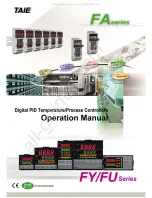
4-5
©
2012 Mobile Climate Control
T-348 Rev. 07/2012
4.5.2 Refrigerant Removal From An Inoperative Com-
pressor.
To remove the refrigerant from a compressor that is
not operational, do the following:
a. Attach a manifold gauge set as shown in Figure 4-5
and isolate the compressor by front seating the dis
charge and suction service valves (items 1 & 6).
b. Recover refrigerant with a refrigerant reclaimer. If
the discharge service valve port is not accessible, it
will be necessary to recover refrigerant through
the suction service valve port only.
c. Service or replace components as required and
leak check the compressor.
d. Using refrigerant hoses designed for vacuum ser
vice, connect a vacuum pump to center connec
tion of manifold gauge set. Evacuate compressor
to 500 microns. Close off vacuum pump isolation
valve (15) and vacuum gauge isolation valve (14),
and stop pump. Wait 5 minutes to verify that vacu
um holds.
e. Once vacuum is maintained, backseat compressor
service valves and disconnect manifold gauge set.
f. Check refrigerant level. Refer to paragraph 4.8.1. It
may be necessary to clear any alarms that have
been generated.
Discharge
Suction
Legend
COMPRESSOR
D
S
14
1
2
3
4
5
6
7
8
9
10
11
12
13
15
1.
Discharge Service Valve
2.
Service Port, Discharge
3.
Discharge Pressure Transducer
4.
Discharge Check Valve
5.
High Pressure Switch
6.
Service Port, Suction Service Valve
7.
Suction Pressure Transducer
8.
Low Pressure Switch
9.
Manifold Gauge Set
10.
Vacuum Pump
11.
Reclaimer
12.
Refrigerant Cylinder
13.
Thermistor Vacuum Gauge
14.
Vacuum Gauge Isolation Valve
15.
Vacuum Pump Isolation Valve
Figure 4-5 Compressor Service Connections
















































